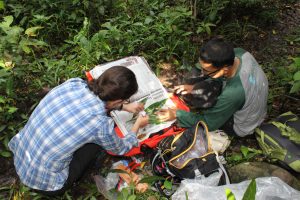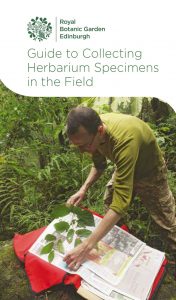In a time of habi tat destruction and species loss it is vitally important to ensure that fundamental botanical work is being carried out to identify, assess and conserve biodiversity around the world. Much of this work is dependent on collecting plant and fungi samples and preserving them for current and future research. These samples are brought together and held in herbaria (collections of preserved plant specimens for scientific study). Some of the methods for collecting herbarium specimens are similar to those developed centuries ago, but there are also new techniques, particularly in the collection of samples for DNA extraction.
tat destruction and species loss it is vitally important to ensure that fundamental botanical work is being carried out to identify, assess and conserve biodiversity around the world. Much of this work is dependent on collecting plant and fungi samples and preserving them for current and future research. These samples are brought together and held in herbaria (collections of preserved plant specimens for scientific study). Some of the methods for collecting herbarium specimens are similar to those developed centuries ago, but there are also new techniques, particularly in the collection of samples for DNA extraction.
 This booklet aims to provide guidance for botanical students and early career botanists, as well as botanists and ecologists who may not have been trained in herbarium collecting techniques. The information is presented in clear points to make it easy to find instructions quickly. The design of the booklet means that it can fit into a pocket, making it easy to take into the field as an informative quick reference guide to collecting herbarium specimens.
This booklet aims to provide guidance for botanical students and early career botanists, as well as botanists and ecologists who may not have been trained in herbarium collecting techniques. The information is presented in clear points to make it easy to find instructions quickly. The design of the booklet means that it can fit into a pocket, making it easy to take into the field as an informative quick reference guide to collecting herbarium specimens.
Collecting biological material is part of the Nagoya Protocol, an international agreement which aims at sharing the benefits of genetic resources in a fair and equitable way. This booklet emphasises the need to ensure that correct permits are in place before collecting plant or fungal specimens.
Available to buy in the RBGE online shop, it has been written as a sister publication to the “Guide to Collecting Living Collections in the Field” which is also available to buy.
